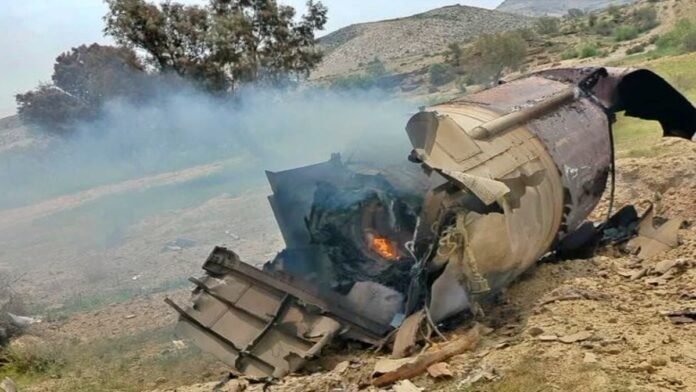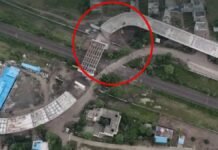
Key Points
- Pakistan’s Shaheen-3 ballistic missile test on July 22, 2025, ended in failure, with the missile crashing near a nuclear plant in Dera Ghazi Khan, Punjab, before debris fell perilously close to populated areas in Balochistan.
- The incident triggered a massive explosion felt up to 50km away, causing widespread panic and raising major safety concerns for civilians.
- Pakistan Army responded by imposing internet blackouts, media restrictions, and advising residents to stay indoors to control the flow of information.
- Activists and local groups accuse the military of endangering civilian lives and using Balochistan as a “testing ground” for dangerous weaponry.
- Official statements minimized the incident, suggesting a fighter jet’s sonic boom as the possible cause for the explosion, but independent reports and widespread online footage point directly to the failed missile test.
Islamabad: A test launch of Pakistan’s Shaheen-3, its most advanced nuclear-capable ballistic missile, turned into a high-profile failure on July 22, 2025. Launched from the Rakhi area of Dera Ghazi Khan, the missile veered dramatically off course shortly after takeoff. It missed the intended target and came down near Pakistan’s principal nuclear installation in Dera Ghazi Khan, triggering a massive explosion whose shockwaves resonated up to 50km away.
The incident did not end there. The missile’s debris traveled further, smashing into the Matt locality of Dera Bugti district in Balochistan, landing only about 500 meters from populated areas. Local residents described a terrifying blast that sent people fleeing in panic, with the chaos captured and widely circulated on social media.
Army Clamps Down Amid Confusion
In the blast’s aftermath, the Pakistan Army swiftly shut down local internet services, limited media access, and instructed citizens to remain indoors. While the Army provided alternate explanations—including the possibility of a sonic boom from a fighter aircraft independent sources and defense analysts insisted the destruction matched the profile of a failed strategic missile test.
Voices of Criticism: Civilian Safety at Risk
Balochistan rights groups and local activists have fiercely criticized the recurring use of their region for hazardous military exercises. The “Republic of Balochistan” condemned the test, contending that the missile’s debris barely missed heavily inhabited communities, and highlighted the long-term health fallout of previous nuclear tests, including increased rates of serious diseases.
About the Shaheen-3 Missile
- Category: Surface-to-surface, medium-range ballistic missile (MRBM)
- Range: 2,750km
- Payload: Nuclear and conventional
- Launch System: Road-mobile, solid-fuel, two-stage design
- Design Objective: Enable Pakistan to strike all major Indian cities and distant island bases, extending the nation’s strategic reach.
The Shaheen-3 remains Pakistan’s most powerful missile platform, designed specifically to hit targets deep within India. Developed in response to India’s Agni-III, its operational reliability is now under scrutiny following repeated test failures and the grave risks these pose to civilian populations.
Pakistan’s Response and the Nuclear Safety Debate
Dera Ghazi Khan, the site near which the missile went awry, is a strategic hub for Pakistan’s nuclear program—processing vast quantities of uranium and believed to be the pivot of the nation’s nuclear weapons effort. Military and local officials have downplayed physical damage, citing no reported casualties or structural loss. However, the event has reignited debate over the safety protocols—or lack thereof—surrounding both Pakistan’s missile and nuclear activities.
Table: Shaheen-3 Missile Key Facts
| Specification | Details |
|---|---|
| Type | Medium-Range Ballistic Missile (MRBM) |
| Range | 2,750 km |
| Payload | Nuclear, Conventional |
| Operational Since | 2016 (publicly displayed) |
| Launch System | Road-mobile, Solid fuel |
| Intended Target Zone | All major cities in India, distant bases |
The latest Shaheen-3 mishap not only calls into question Pakistan’s missile reliability and crisis management, but also spotlights the ongoing dangers faced by civilians living near military and nuclear facilities. The secrecy, blackout, and tightly controlled narrative surrounding this incident have fueled public distrust and renewed scrutiny of Pakistan’s strategic arsenal.




















































